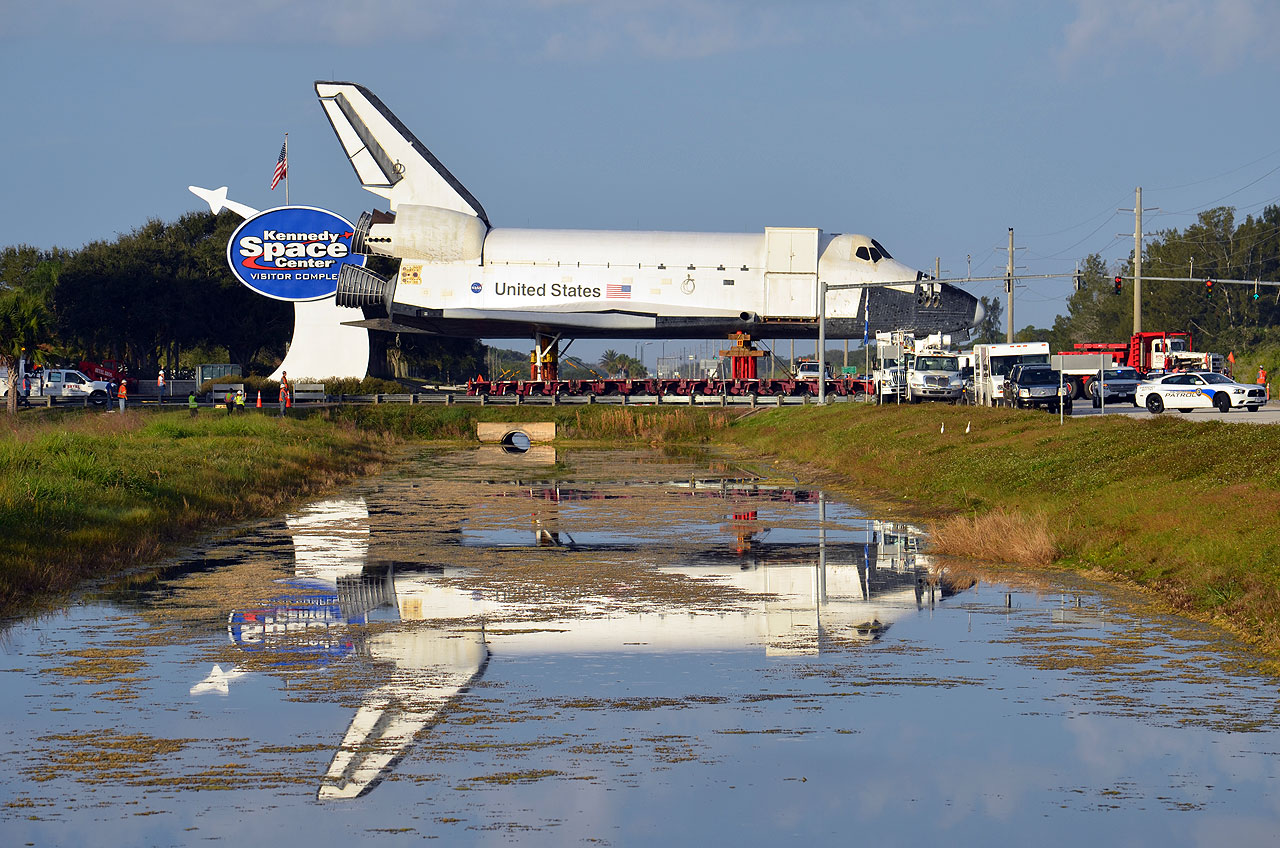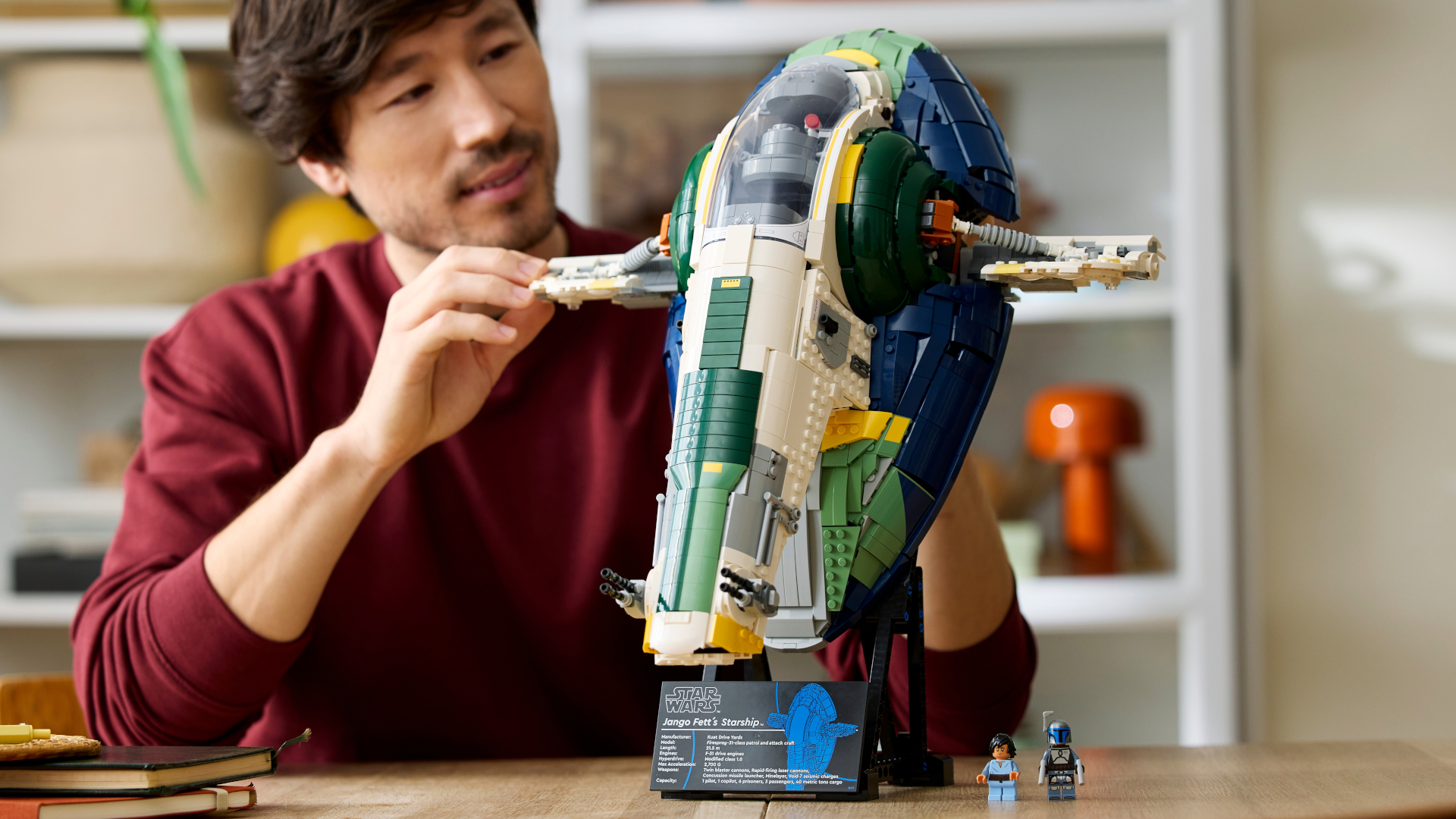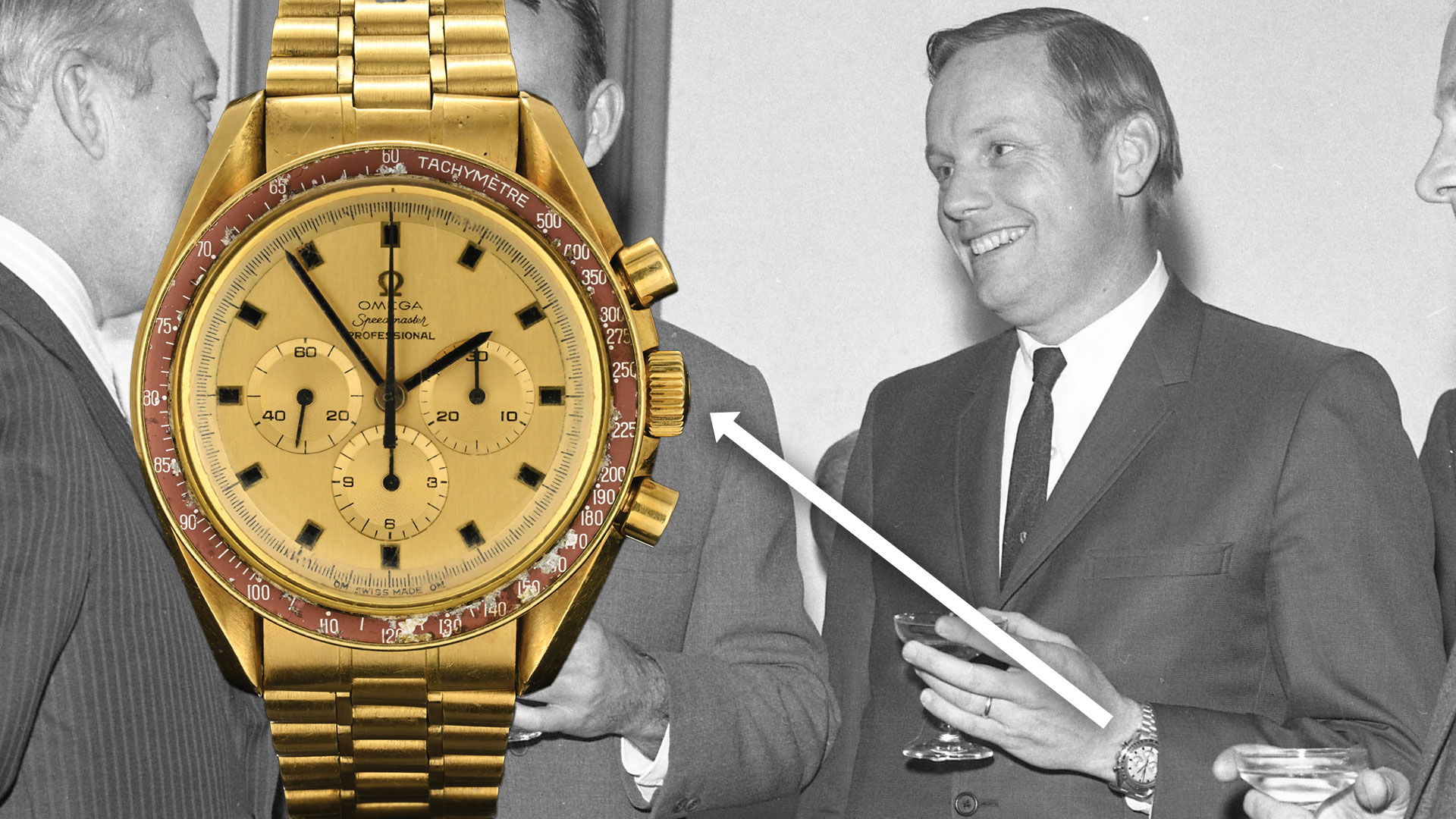Mock Space Shuttle Moves to Make Way for Real Thing

A static full-scale space shuttle display did something unusual on Sunday morning (Dec. 11) — it moved.
Named Explorer, the 122.7-foot (37.4-meter) long shuttle replica was hoisted onto a wheeled transporter and trucked the 5.4 miles (8.7 kilometers) from NASA's Kennedy Space Center Visitor Complex to a turn basin adjacent to the 52-story Vehicle Assembly Building, where real space shuttles were once prepared for launch. It was the first time in 18 years that the mock shuttle was moved.
Explorer will wait there until it is shipped by barge from Florida to Texas in the next several months, where it will be displayed by Space Center Houston, the official visitor center for NASA's Johnson Space Center.
The move was necessary to clear room at the Kennedy visitor complex for a new $100 million, 64,000 square-foot facility to display the space shuttle Atlantis. Now being prepared for display after flying the final mission of NASA's 30-year shuttle program in July, Atlantis will make the same overland trip as Explorer — in the reverse direction — in November 2012.
Explorer was created by the aerospace replica manufacturer Guard-Lee, Inc. and installed at the visitor complex in 1993. Built using schematics, blueprints, and archival documents provided by NASA and shuttle contractors such as Rockwell International (now part of the Boeing Company), some of its core parts, including the tires used on its landing gear, are authentic to the shuttle program. [Photos: Mock Shuttle's Sunday Drive]
In addition to offering the public a realistic exterior appearance and a sense of the scale for the real winged shuttles, Explorer also features a walk-through interior, including the payload bay and crew cabin. Visitors could ascend a gantry-style tower positioned alongside the 54-foot (16.5-m) tall replica and view a mock satellite inside the cargo hold and see the commander's and pilot's stations on the flight deck.
Space Center Houston plans to preserve and perhaps enhance Explorer's interior tour. Visitors to Atlantis in Florida and the other authentic orbiters will not be able to go inside.
Get the Space.com Newsletter
Breaking space news, the latest updates on rocket launches, skywatching events and more!
Before Explorer could depart for its temporary waterside parking spot on Sunday, construction crews needed to first remove full-size replicas of the shuttle's solid rocket boosters and external tank that were displayed separately adjacent to the orbiter. That work was completed Dec. 1 as they were trucked to NASA's transfer and disposal yard to await their next move, still to be decided.
Explorer then needed to clear its own hurdle: a guard house that divides the road leading to the turn basin. Workers raised the replica shuttle on its transporter so that its 78-foot (23.8-m) wingspan could clear the small building.
View photographs of the replica space shuttle Explorer on the move at collectSPACE.com.
Follow collectSPACE on Facebook and Twitter @collectSPACE and editor Robert Pearlman @robertpearlman. Copyright 2011 collectSPACE.com. All rights reserved.
Join our Space Forums to keep talking space on the latest missions, night sky and more! And if you have a news tip, correction or comment, let us know at: community@space.com.

Robert Pearlman is a space historian, journalist and the founder and editor of collectSPACE.com, a daily news publication and community devoted to space history with a particular focus on how and where space exploration intersects with pop culture. Pearlman is also a contributing writer for Space.com and co-author of "Space Stations: The Art, Science, and Reality of Working in Space” published by Smithsonian Books in 2018.In 2009, he was inducted into the U.S. Space Camp Hall of Fame in Huntsville, Alabama. In 2021, he was honored by the American Astronautical Society with the Ordway Award for Sustained Excellence in Spaceflight History. In 2023, the National Space Club Florida Committee recognized Pearlman with the Kolcum News and Communications Award for excellence in telling the space story along the Space Coast and throughout the world.










